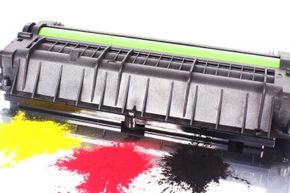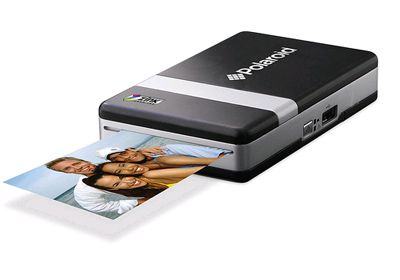Contemporary printing technology is faster and cheaper than ever before, but it's not always immediately obvious which type of printer is best for specific jobs. Make the wrong choice, and you could blow hundreds of extra dollars per year on printer consumables — namely ink or toner.
Ink is used in inkjet printers. It's a liquid tinted with pigments or dyes. Toner, on the other hand, is a fine powder that's used in laser printers.
Advertisement
Both inkjet and laser printers are used for home and commercial printing purposes, such as creating prints taken with your digital camera or zipping through dozens of pages of text. But the way they apply material to a piece of paper is very different.
Inkjet printers squirt tiny droplets of ink through equally tiny nozzles and onto paper. You can sort of imagine the nozzles as tiny water hoses, all turning on and off thousands of times per second. Sophisticated printer software controls all of the nozzles, shooting ink in precise patterns that make up your newest haiku or perhaps a picture of your cat lounging on your keyboard.
There are two primary categories of inkjet ink: dye-based or pigment-based. Dye-based inks consist of colorants that are dissolved in a liquid. Pigmented inks, on the other hand, use ultra-fine powder that's suspended in liquid. If you want to know exactly what's in these inks, good luck to you. Inkjet cartridges are a huge revenue generator for printer companies, and they carefully guard their formulas.
Laser printing technology isn't quite as straightforward. That's because toner doesn't adhere to paper the way that a liquid-based ink does.
Toner is made up mostly of finely ground polyester, which is a type of plastic. Like your slacks sticking to your legs, polyester powder can hold a static charge that grabs onto anything with an opposite charge.
In these printers, a laser creates an electrostatic template of your desired images on a rotating metal drum, which has an electrical charge. A cartridge dispenses toner onto the drum, but the toner sticks only to certain places — such as the outline of your kitty's soft belly — where the laser alters the drum's electrical charge.
Fittingly, the printer also charges the sheets of paper as they pass through the machine. As the sheet curls past the drum, it pulls off the charged toner in exact shapes that make up text and images. Then a hot fuser basically melts the polyester in place, making sharp, smudge-free prints.
Advertisement


